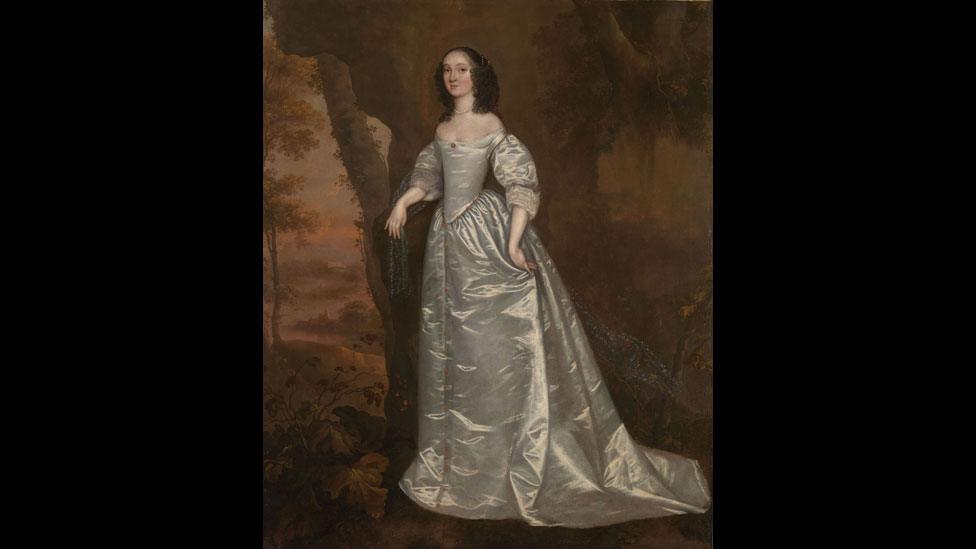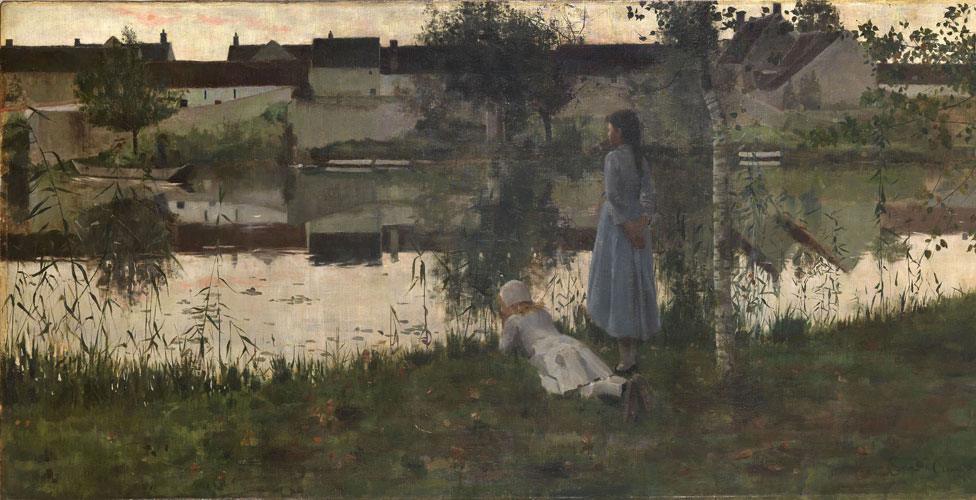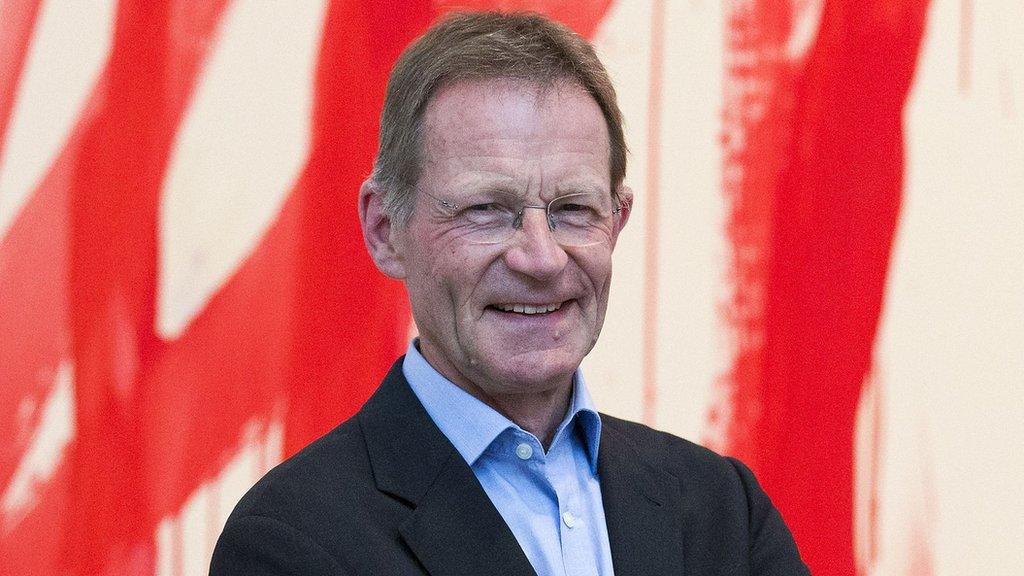Tate announces female artist first with 17th-Century portrait
- Published

Carlile's portrait is the earliest work by a female artist in Tate's collection
A 17th-Century portrait by the first woman in Britain thought to work as a painter has been acquired by the Tate.
Joan Carlile's Portrait of an Unknown Lady is the earliest work by a female artist to enter the Tate's collection.
Other new acquisitions include 1882's Le Passeur (The Ferry) by William Stott of Oldham, described as "an exceptional work of early British impressionism".
Mark Wallinger has also donated State Britain, a Turner Prize-winning replica of Brian Haw's anti-war protest camp.
The British artist's reconstruction of Haw's one-man protest in Parliament Square won the £25,000 award in 2007.
According to the Tate, Carlile was the first woman in Britain thought to work as a professional portrait painter in oil.
Portrait of an Unknown Lady, painted between 1650 and 1655, is one of a small number of her surviving works.

Why are women so under-represented in British art history?
By Rebecca Jones, BBC News arts correspondent
You can probably count on the fingers of one hand the number of British female artists working in the mid-17th Century. For a start, women did not have access to formal artistic education. Women were not accepted into art academies until the mid-19th Century.
But they could also work professionally only with the say-so of their husbands.
Painting would have been regarded as an amateur activity - merely an extension of feminine virtues. Few would have been able to have a commercial studio.
Nonetheless Joan Carlile proves there were exceptions. And yet they are not represented in our galleries.
Tabitha Barber, a curator of British Art at Tate, says "it's a built-in prejudice".
"You begin to think that great artists are male artists," she said.
Tate wants to reflect more diversity.
"We have a big strategy in trying to make women more visible on our walls," she added.

Stott's painting, widely regarded as his crowning achievement, depicts two girls watching a ferryman at dusk.
The work will be displayed at Tate Britain in April 2017 before going on tour to three other UK galleries.
"We have the greatest collection of British art in the world and it gets better ever year," said Tate Britain director Alex Farquharson.

Le Passeur by William Stott of Oldham is 1.8 metres long
Tate Britain has also announced major solo exhibitions for David Hockney and Rachel Whiteread.
The Hockney show will open in February and is to be the most extensive exhibition of his work ever held, spanning his six-decade career.
The mid-career retrospective of sculptor Whiteread will be held next September.
Earlier this month it was announced that Sir Nicholas Serota is to step down as director of the Tate galleries next year. He will become chairman of Arts Council England.

Follow us on Twitter @BBCNewsEnts, external, on Instagram, external, or if you have a story suggestion email entertainment.news@bbc.co.uk, external.
- Published8 September 2016
